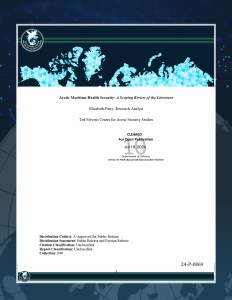As the Arctic maritime domain continues to increase in accessibility, so too do the health security threats associated with increased maritime commerce. Robust monitoring and risk assessments are needed to predict and prevent health security crises before they occur. In the Arctic maritime domain, coastal communities are largely characterized by small, remote, Indigenous villages, many of which are not connected to the road system, and have limited public health and medical infrastructure. In the event of a maritime emergency or disaster, these communities would likely be the first impacted, as well as potentially the “first responders” to such an event. Community-level indicators are therefore crucial to collecting accurate and relevant information regarding the health security risk environment of the Arctic maritime domain. A previous special report produced by the Ted Stevens Center for Arctic Security Studies, however, highlights that conventional health security frameworks lack the measurement capacity to assess community-level health security. This special report sought to build upon this work by conducting a scoping review of the existing peer-reviewed literature regarding the measurement of health security. This review included a total of 22 peer-reviewed journal articles. Of these articles, only two (9%) used measurement tools with the capacity to measure health security below the national level, and none included community-level indicators. In addition, no articles used tools with indicators of the health security risks associated with the maritime domain. This reveals two critical gaps in the health security literature, and in particular, in the tools needed to accurately reflect the health security of the Arctic region.

